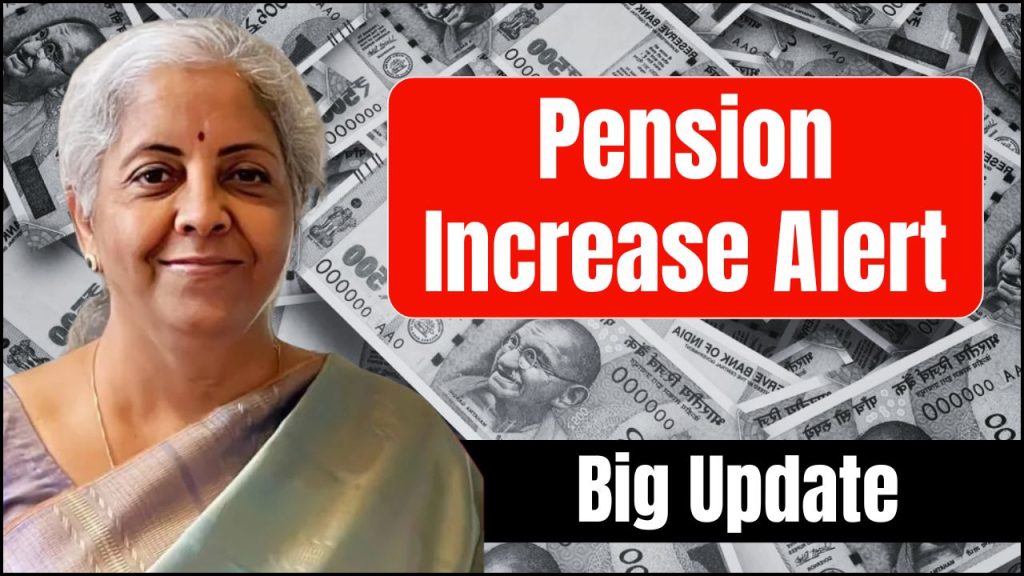
India’s pension framework is set for some noteworthy changes aimed at enhancing retirees’ financial security. In 2025, several developments are expected to significantly impact the lives of millions of pensioners. These include a proposed rise in the minimum pension under the Employees’ Pension Scheme (EPS), the implementation of a new Unified Pension Scheme (UPS) for central government workers, and a revision in Dearness Allowance (DA) for central government employees and pensioners. Each of these reforms is aimed at addressing rising living costs and ensuring better post-retirement financial support.
Proposed Hike in EPFO Minimum Pension
A major relief is on the horizon for over 60 lakh pensioners under the Employees’ Provident Fund Organization (EPFO). The organization has recommended an increase in the minimum monthly pension from the current ₹1,000 to ₹3,000. This proposal has been designed to provide more substantial financial backing to pensioners who currently struggle with the inadequacy of the existing pension amount, especially in light of rising inflation and day-to-day expenses.
If approved, the revised pension amount is expected to be implemented starting April 2025. However, this move is not without its financial implications. Experts suggest that for the increase to be sustainable, both employer and employee contributions might need to be revised upward. Moreover, the EPFO will need to strategize fund management to accommodate the higher disbursals without compromising its long-term financial health.
Unified Pension Scheme for Central Government Employees
In another significant reform, the Government of India has approved the Unified Pension Scheme (UPS) for central government employees. This scheme, which was given the green light in August 2024, is set to come into effect from April 1, 2025. The key feature of the UPS is that it promises to provide pension benefits equivalent to 50% of an employee’s last drawn basic salary, a sharp contrast to the current market-linked National Pension System (NPS).
However, not every central government employee will be immediately eligible. To benefit under UPS, employees must have completed at least 25 years of service. This eligibility criterion aims to ensure that only long-serving employees can avail themselves of the guaranteed pension benefits. The government has estimated the cost of implementing UPS at around ₹6,250 crore for the fiscal year 2024–25.
This scheme is expected to offer more stability and certainty in retirement income, especially when compared to NPS, which is subject to market fluctuations. It also reflects the government’s intent to move towards a more secure and welfare-oriented pension structure for its employees.
DA Hike: Relief for Central Government Employees and Pensioners
In addition to reforms in pension schemes, the government has also approved a 2% increase in the Dearness Allowance (DA) for central government employees and pensioners. This increase, effective from January 1, 2025, will raise the DA from 53% to 55% of the basic pay or pension. The adjustment is aimed at cushioning the effects of inflation on salaries and pensions.
The revision is expected to benefit approximately 1.15 crore individuals, which includes 48.66 lakh current employees and 66.55 lakh pensioners. The financial implication of this DA hike on the national exchequer is projected to be ₹6,614.04 crore annually.
Such periodic revisions in DA play a crucial role in helping salaried and retired individuals manage the rising cost of living. This also shows the government’s continued commitment to addressing inflationary pressures on fixed-income groups.
Ongoing Demands and the Road Ahead
While these initiatives are steps in the right direction, they have not fully satisfied all stakeholders. Many trade unions and pensioners’ organizations have been vocal in demanding further enhancements. One of the prominent demands is to raise the EPFO minimum pension to ₹7,500 per month. These groups argue that considering today’s cost of living and inflation trends, the proposed ₹3,000 minimum pension is still insufficient.
Additionally, discussions around the 8th Pay Commission are ongoing. If implemented, the new pay commission could lead to further revisions in pay scales and pension benefits for central government employees and pensioners, potentially bringing more relief in the future.
Final Thoughts
The recent and upcoming changes in India’s pension policies indicate a concerted effort by the government to ensure retirees have a more secure and dignified post-retirement life. From raising the EPFO minimum pension to launching the Unified Pension Scheme and revising the Dearness Allowance, the reforms target both immediate relief and long-term stability.
These developments underscore the importance for all stakeholders—employees, pensioners, and policymakers- to stay informed and engaged with these evolving policies. Proper planning and timely action can help individuals make the most of these benefits and lead financially stable lives after retirement.
As we move closer to April 2025, when many of these reforms are expected to take effect, it becomes crucial for retirees and soon-to-be retirees to understand how these changes will impact their personal finances. By staying updated and proactive, one can ensure a more comfortable and worry-free retirement.

